Berbere (Ethiopian Spice Blend)
This post may contain affiliate links. See my disclosure policy.
Central to Ethiopian cuisine is Berbere, a fiery hot and fragrant spice blend bursting with flavor. Now you can make your own right at home with my authentic berbere recipe that will bring life, flavor, and some serious kick to your food!
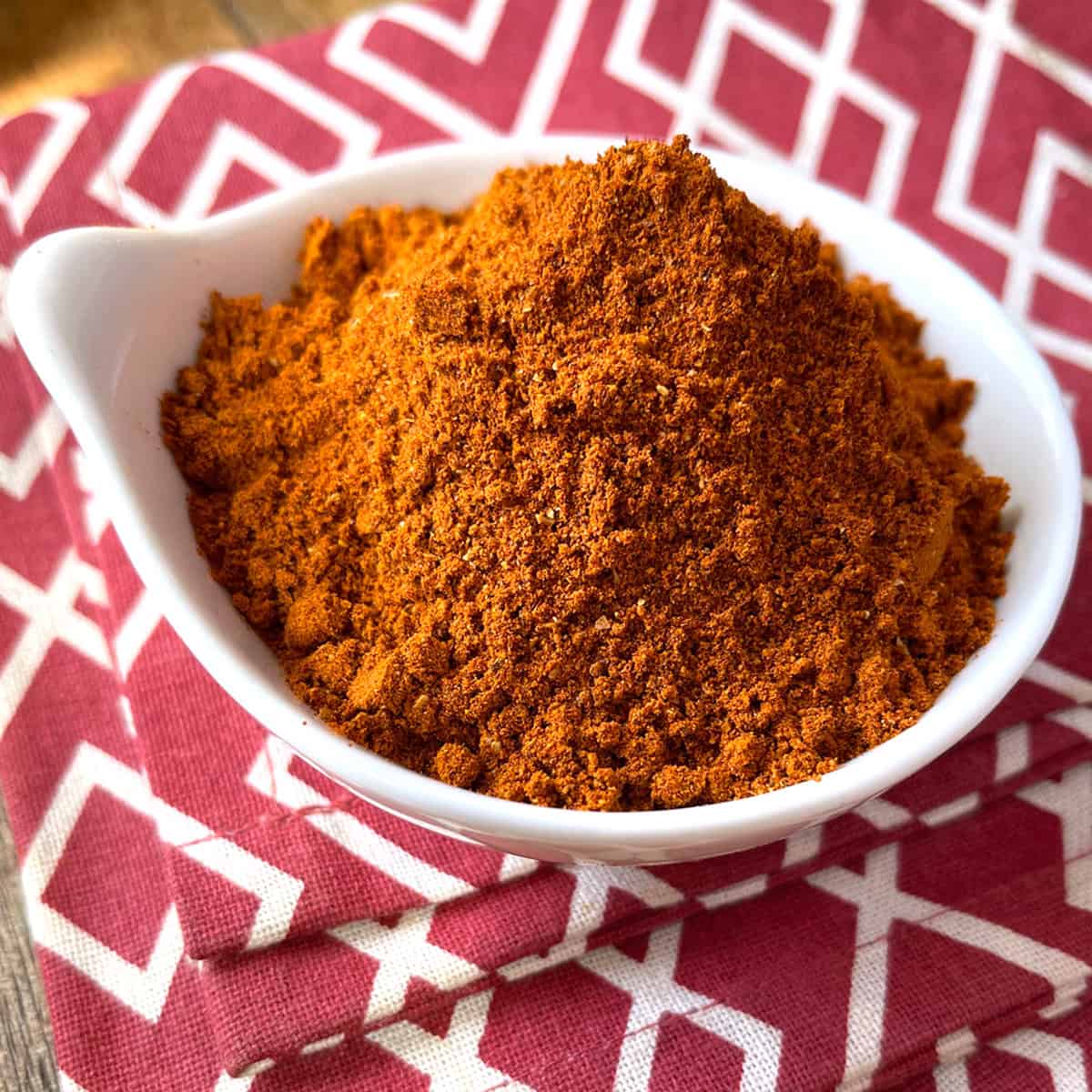
What is Berbere?
Berbere is a bold and fragrant spice blend known for its deep red color and complex flavor and is an integral ingredient in Ethiopian cuisine, most notably Doro Wat, the famous spicy chicken stew. It’s also known for its potent heat and this spice is not for the faint of heart – or taste buds. Every Ethiopian cook has their own version of this blend. Some versions include lesser known spices like nigella seeds, ajwain, and korarima, a spice that grows wild in Ethiopia. Whatever the version, there are several key spices that are common to all and the result is a fiery, bright red, highly aromatic and flavorful seasoning blend. It’s fantastic as a rub for meat, poultry and fish, a seasoning for stews, soups, grains and vegetables (see below for recommendations). Berbere makes a wonderful all-purpose seasoning.

Berbere Ingredients
Berbere is made up of several spices and I strongly recommend using whole spices wherever and whenever possible. The whole spices are toasted, cooled and ground, yielding maximum flavor. If you already have these spices in ground form and don’t want to purchase the whole spices, you can substitute pre-ground. To make berbere you’ll need a combination of pre-ground spices and whole spices that you’ll toast and grind.
For the whole spices you will need:
- Coriander Seeds
- Cumin Seeds
- Green Cardamom Seeds
- Dried Red Chili Peppers
- Whole Allspice Berries
- Whole Cloves
- Fenugreek Seeds
- Black Peppercorns
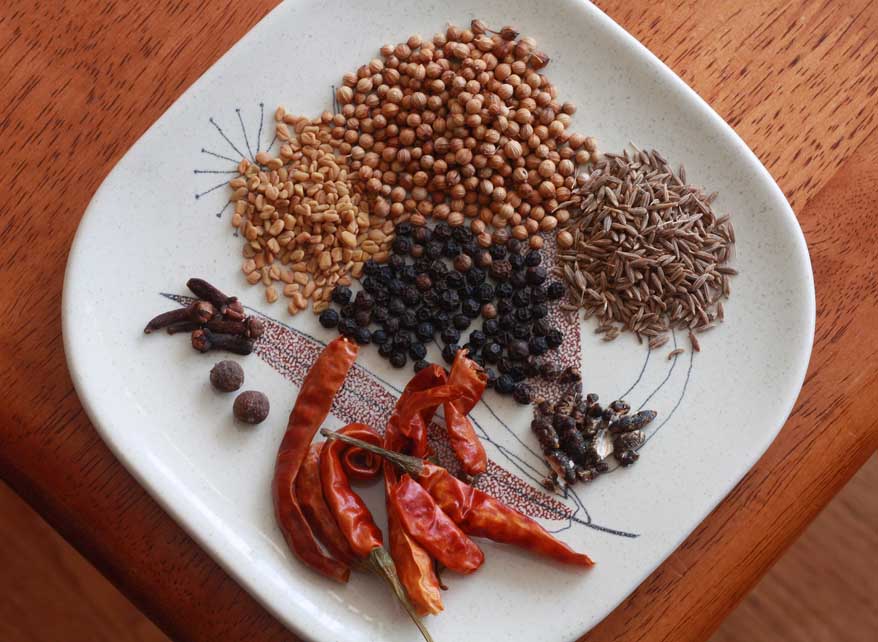
For the ground spices you will need:
- Sweet Paprika
- Ground Cinnamon
- Ground Ginger
- Ground Turmeric
- Ground Nutmeg
- Kosher Salt
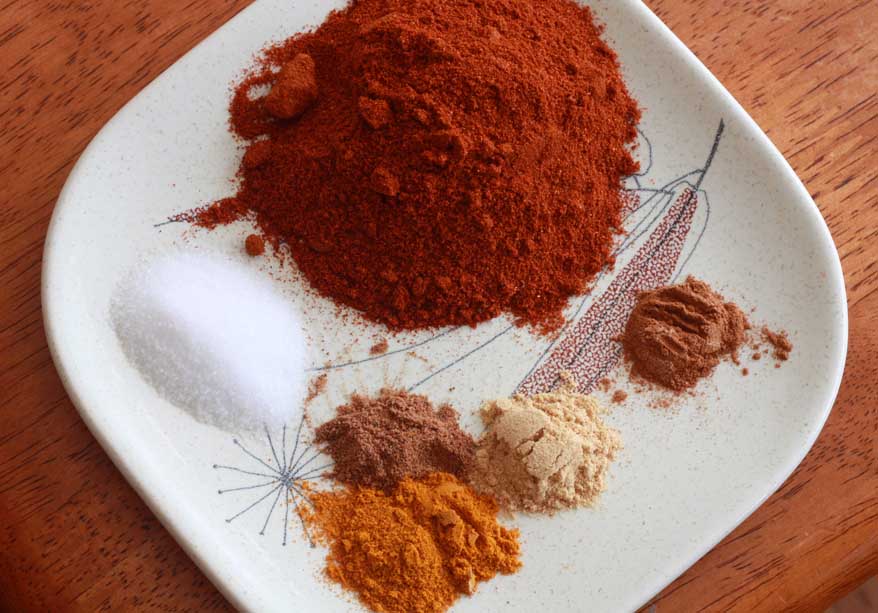
Berbere Recipe
Let’s get started!
First, we’re going to toast the whole spices and red chilies. This releases their natural oils, flavor and aroma. Heat a skillet over high heat and toast the seeds until very fragrant, about 3 minutes. Shake regularly to prevent scorching. Transfer them to a bowl to cool completely.
Note: If you aren’t afraid of extreme heat, leave the membranes and a few of the seeds in while de-seeding the chilies.
Once cooled, grind the whole spices in a spice or coffee grinder.
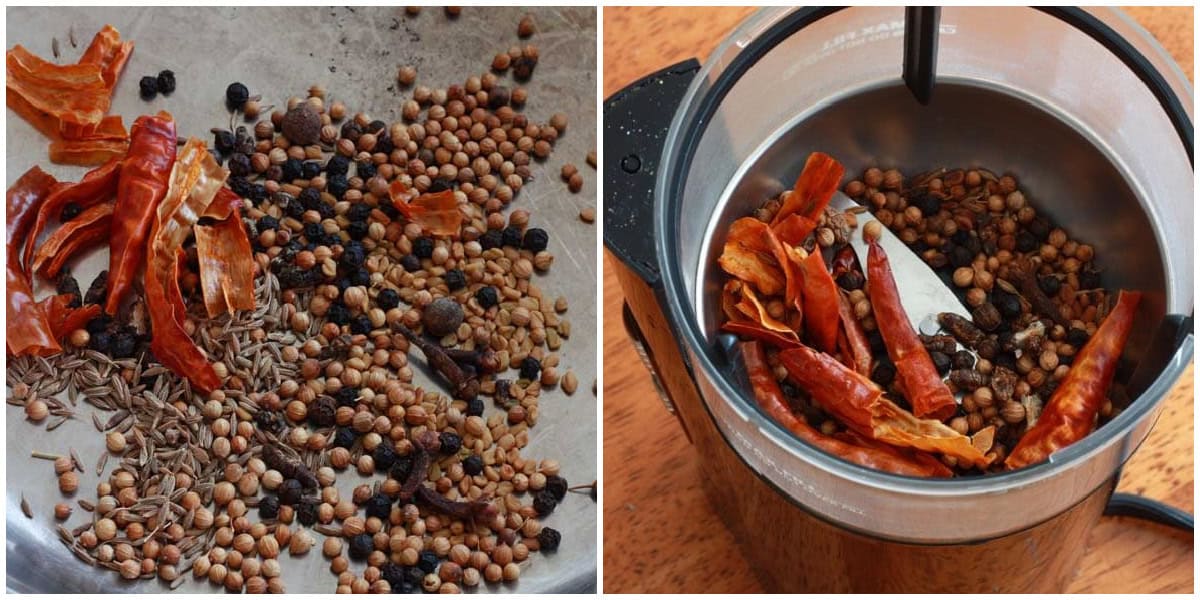
Next, add the powdered spices to the spice/coffee grinder.
Grind all the spices to a powder.

Transfer the blend to a jar with a lid.
Store the Berbere in an airtight jar in a dark, cool place until ready to use. This will keep for several months for maximum flavor use it within 3 months.
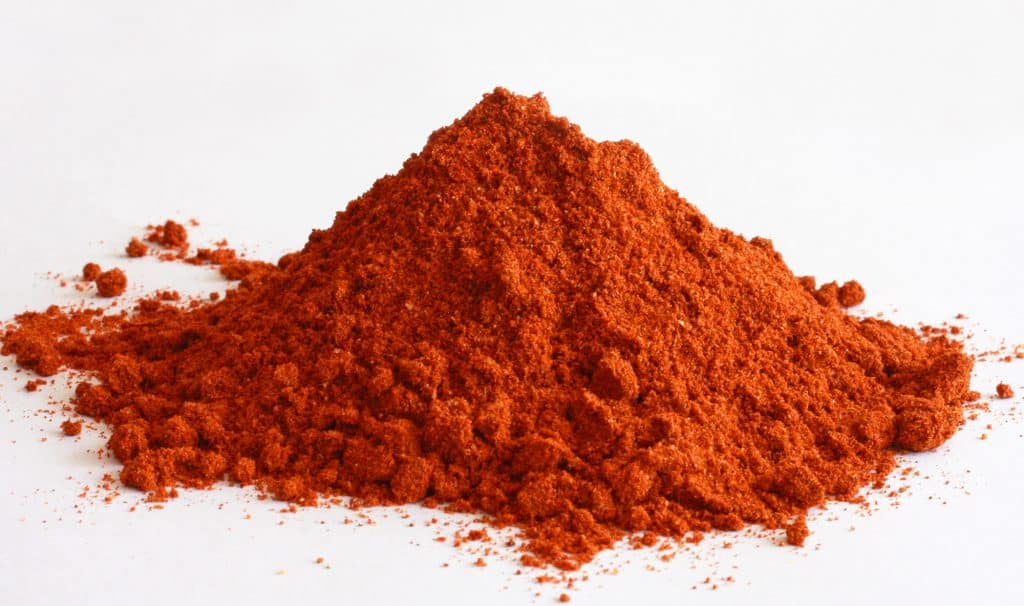
How to Use It
Berbere is a flavorful and fragrant spice blend that can be used in a variety of dishes. Remember, this seasoning blend is very potent and a little goes along way, so start with less and add as desired. Here are just a few ways you can use it:
- Stews and Curries: It’s most famously used in Ethiopian Doro Wat and Sega Wat. It can be used in a variety of stews to give them a flavor boost and some spicy kick.
- Lentils and Beans: Whether lentil or bean soups or salads, berbere really brings legumes to life. It’s classically used in Ethiopia’s famous lentil dish, Misir Wat.
- Vegetables: Just a pinch of it over roasted, grilled or steamed vegetables adds flavor and color.
- Grains: Stir into rice, quinoa or couscous to infuse them with flavor.
- Meat Rub or Marinade: Use it as a dry rub on meats, seafood or poultry before grilling, or combine it with some oil or yogurt to rub onto the meat before cooking.
- Scrambled Eggs and Avocado Toast: It adds the perfect kick and flavor.
- Compound Butter: Like Ethiopia’s famous Niter Kibbeh, Berbere can be added to melted butter and poured into a mold to make a spicy and flavorful compound butter that’s delicious on steaks, poultry, seafood, and vegetables.
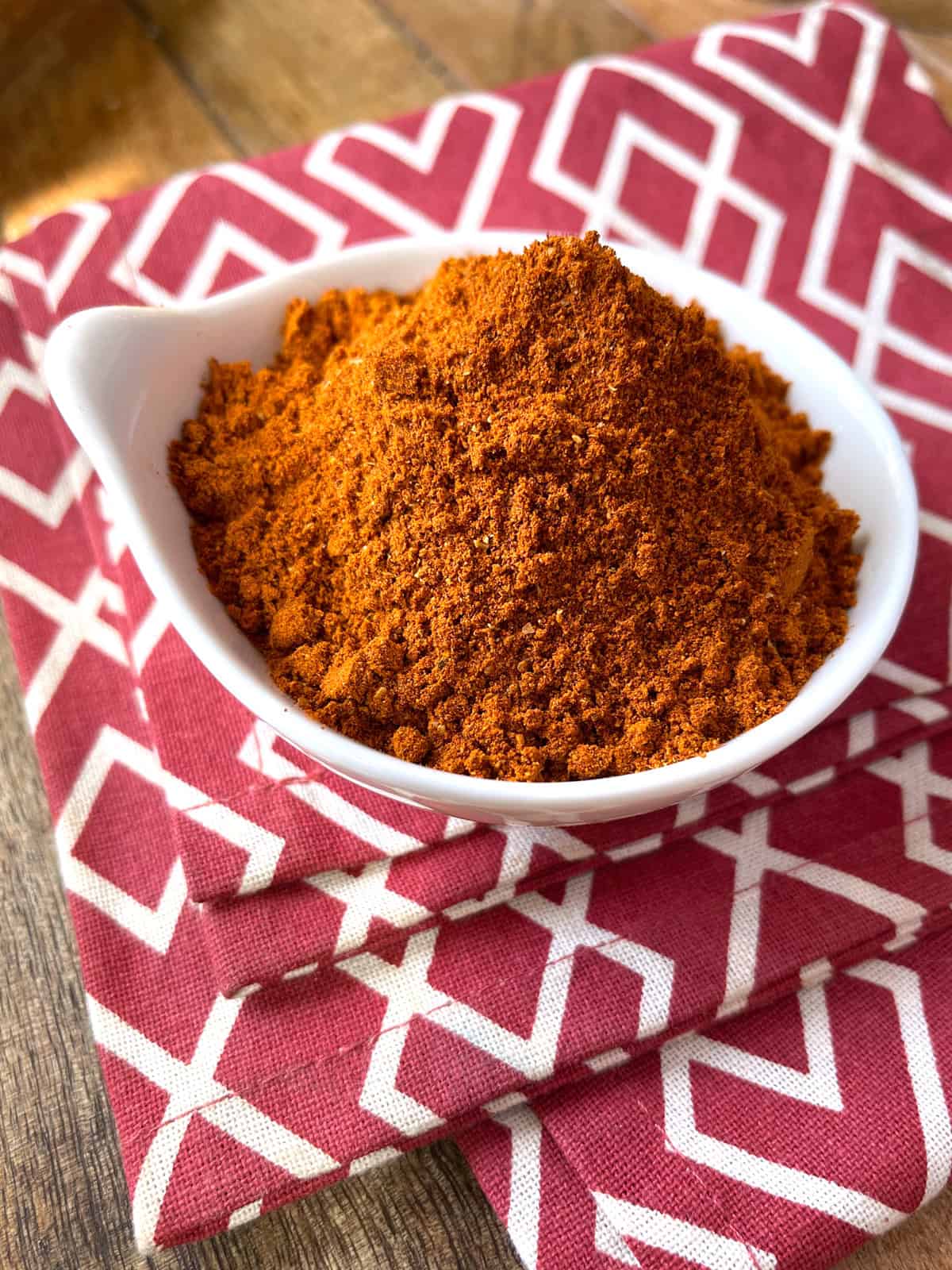
For more delicious seasoning blends from around the world to try my:
Save This Recipe
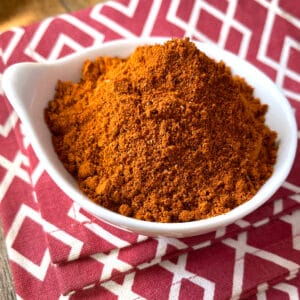
Berbere (Ethiopian Spice Blend)
Equipment
Ingredients
- 2 teaspoons coriander seeds
- 1 teaspoon cumin seeds
- 1/2 teaspoon fenugreek seeds
- 1 teaspoon black peppercorns
- 2 whole allspice berries
- Seeds of 4 green cardamom pods
- 4 cloves
- 5 dried red chilies , seeds and membranes removed and broken into small pieces (see Note)
- 3 tablespoons sweet paprika
- 1 teaspoon turmeric
- 1 teaspoon kosher or sea salt
- 1/2 teaspoon ground ginger
- 1/4 teaspoon nutmeg
- 1/4 teaspoon cinnamon
Instructions
- In a heavy skillet over high heat, toast the whole spices (seeds) and chilies, shaking the pan regularly to prevent scorching, until very fragrant, about 3 minutes. Transfer to a bowl and let cool completely.
- Grind the cooled spices in a spice or coffee grinder. Add all remaining ground spices and salt and grind everything together.Store in an airtight container in a dark, cool place. Will keep for up to 3 months.
Notes
Nutrition
Originally published on The Daring Gourmet August 26, 2013
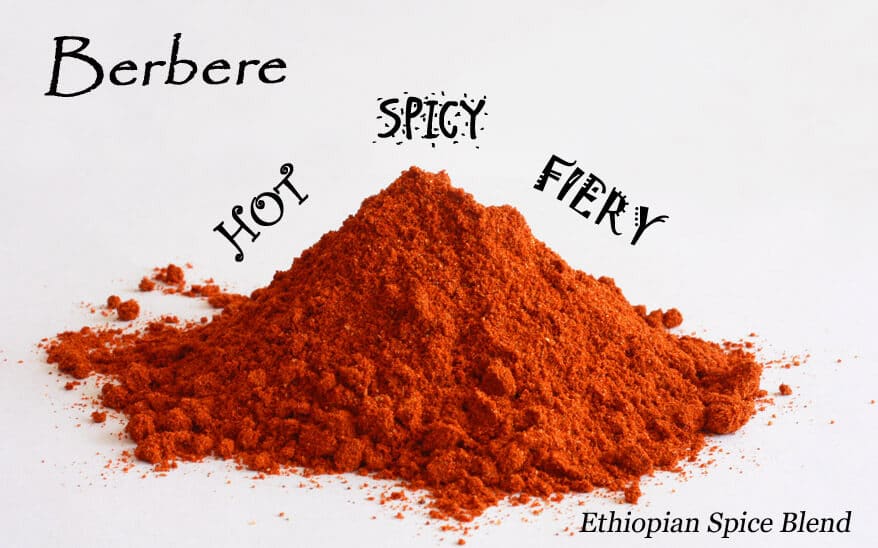



















Just wanted to check if whole allspice berries and allspice are the same. I can’t find whole allspice berries where I’m from.
Hi Sukriti, yes they are the same thing. 2 whole allspice berries is roughly the equivalent of 1/4 teaspoon ground allspice. Happy cooking! :)
You’re a darling! Ethiopian cooking has got to be the unsung winner in Africa, and that bebere mixture is part of why it is delicious. I’m the kind who doesn’t like to get the specific spice mixtures for a recipe, since they usually just sit there and clump up (garam marsala is an exception). Using this in a recipe will spice up any night, which I am looking forward to doing down the track.
Does the authentic Berbere mixture contain the Berbere Pepper?
Hi Mark, if you can source dried and ground Berbere peppers where you are (aka mareko fana peppers) then yes, definitely use them.
Hello,
I was hoping you could tell me which chiles are best for this. Would chile de arbol work?
Thanks!
Hi Talia, the chiles in the store are generally just labeled as “dried red chiles” and can refer to any number of dried hot red chiles. Yes, arbol chiles will work great for this spicy hot blend.
Thank you Kimberly! You have catapulted me back to my childhood in my birthplace of Addis, where my beloved Ethiopian Nanny Bouzounesh used to make the berberé for the household . . .she didn’t trust the market place vendors!!
The name Bouzounesh translates to ‘You are plentiful’ . . .and that she was . . .my Guardian Angel Nanny, who taught me to speak Amarigna . . .80 years later, in far away Australia, I still speak Amarigna, but only to myself . . nobody to talk to where we are!
Many blessings for the lovely information Kimberley, and for bringing back so many beautiful memories!
stay well
Claudette
What treasured experiences and memories those must be for you, Claudette, thank you for sharing and happy cooking! :)
Hi Kimberly,
I just wanted to confirm. You used green cardamom pods for the Berbere but black for the Niter Kibbeh?
Do you think it would be ok to use the Black cardamom for the Berbere too?
Hi Natalie, they have very different flavor profiles but if you don’t have green cardamom for the berbere you can use some black cardamom in it. I’d use 3 pods instead of 4 because the black ones tend to be larger.
I have been looking around for almost a year and finally found what I want. Thank you so much for sharing the India and Ethiopia original’s.
You’re welcome, Diana, I’m so glad you enjoyed them, thank you! :)
Thank you! Good recipe, lovely smells. I tripled the recipe for sufficient quantity. Not a bad idea to mention to the household before hand that you’ll be toasting chilis. Lol.
Thanks again.